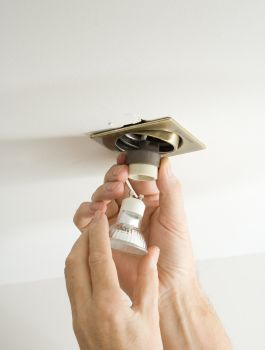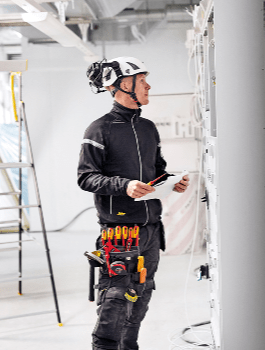Alarm Panel Fault Checklist
Blog
Are you experiencing an Alarm Panel Fault? Is your home or business panel down or not functioning as it should?
You’re probably at least a little bit panicked. You just want the alarm fault fixed so you can go back to the more important tasks of the day without worrying about security, we get it.
Well, there are a few tests you can do with a simple multimeter that will narrow down the issue and hopefully give you something to tell the electrician or service company when they get there and potentially cut down service time or diagnostic charges.
Step 1.1
MAINS VOLTAGE ACROSS LIVE AND NEUTRAL
Switch multimeter to highest AC range
Connect test probes across live and neutral
Reading should be between 220 and 250VAC and reasonably
Step 1.2
MAINS VOLTAGE ACROSS LIVE AND EARTH
Connect test probes across live and Earth
Reading obtained should be almost identical to previous reading
A difference of more than 1.2VAC means an Earth fault may exist
Step 1.3
MAINS VOLTAGE ACROSS NEUTRAL AND EARTH
Switch the multimeter to 20VAC range
Connect test probes across neutral and Earth
Reading should not exceed 1.2VAC (example shows 0.019V)
Step 2
POWER SUPPLY CURRENT NORMAL (UNSET)
Switch meter to highest AC current range
Disconnect either AC output lead to panel
Connect test probes in series with removed lead and power supply terminal
Record AC mA reading obtained
Step 3
POWER SUPPLY CURRENT IN ALARM
Generate a full alarm condition
Record AC mA reading obtained
Excessive current in this or previous test indicates a system fault
Disconnect 12VDC supply to PIRs, bells, battery etc in turn to identify fault
Step 4
INDUCED AC VOLTAGE
Switch multimeter to 20VAC range
Connect probes across any DC+ and Earth
Induced AC reading should not exceed 1.2V
To eliminate induced AC, fit an ACT 1313 12V spike suppressor
Step 5
BATTERY CHARGING VOLTAGE
Switch multimeter to 20VDC range
Connect test probes across battery
Reading should be between 13.5 - 14VDC (Below 13V the battery will not charge, above 14.5V the battery will overcharge)
Step 6
AUXILIARY DC VOLTAGE
Connect probes across auxiliary DC supply
Reading obtained should be within 0.5VDC of battery charging voltage
Any variation >±1VDC may cause false alarms
Step 7
BATTERY FLOAT CHARGE
Switch multimeter to DC mA range
Remove red charge lead from battery
Connect test probes in series with removed charge lead & positive battery terminal
A double mA reading, falling to a single mA reading should occur within 30 seconds
If a constant high or no mA reading, replace battery
Step 8
BATTERY CURRENT NORMAL (UNSET)
Switch multimeter to 20A DC range
Disconnect mains supply by removing panel or 'spur' fuse
Reading ideally should not exceed 5% of battery capacity (7Ah = 350mA)
Step 9
BATTERY CURRENT IN ALARM
Generate a full alarm condition
Reading ideally should not exceed 10% of battery capacity (7Ah = 700mA)
Step 10
BATTERY CAPACITY TEST
Disconnect battery from control panel
Check battery terminals are clean
Connect battery tester leads red+ black-
Record ambient temperature, DC voltage and Ah capacity available
Replace battery when capacity falls below 65% (e.g. 7Ah replace below 4.55Ah)
Now you’ve been through this easy checklist you should be comfortable knowing what the issue is, turning a big diagnostic issue into a simple repair for your electrician or serviceman.

 Hate
Hate
 Dislike
Dislike
 Neutral
Neutral
 Like
Like
 Love
Love





















